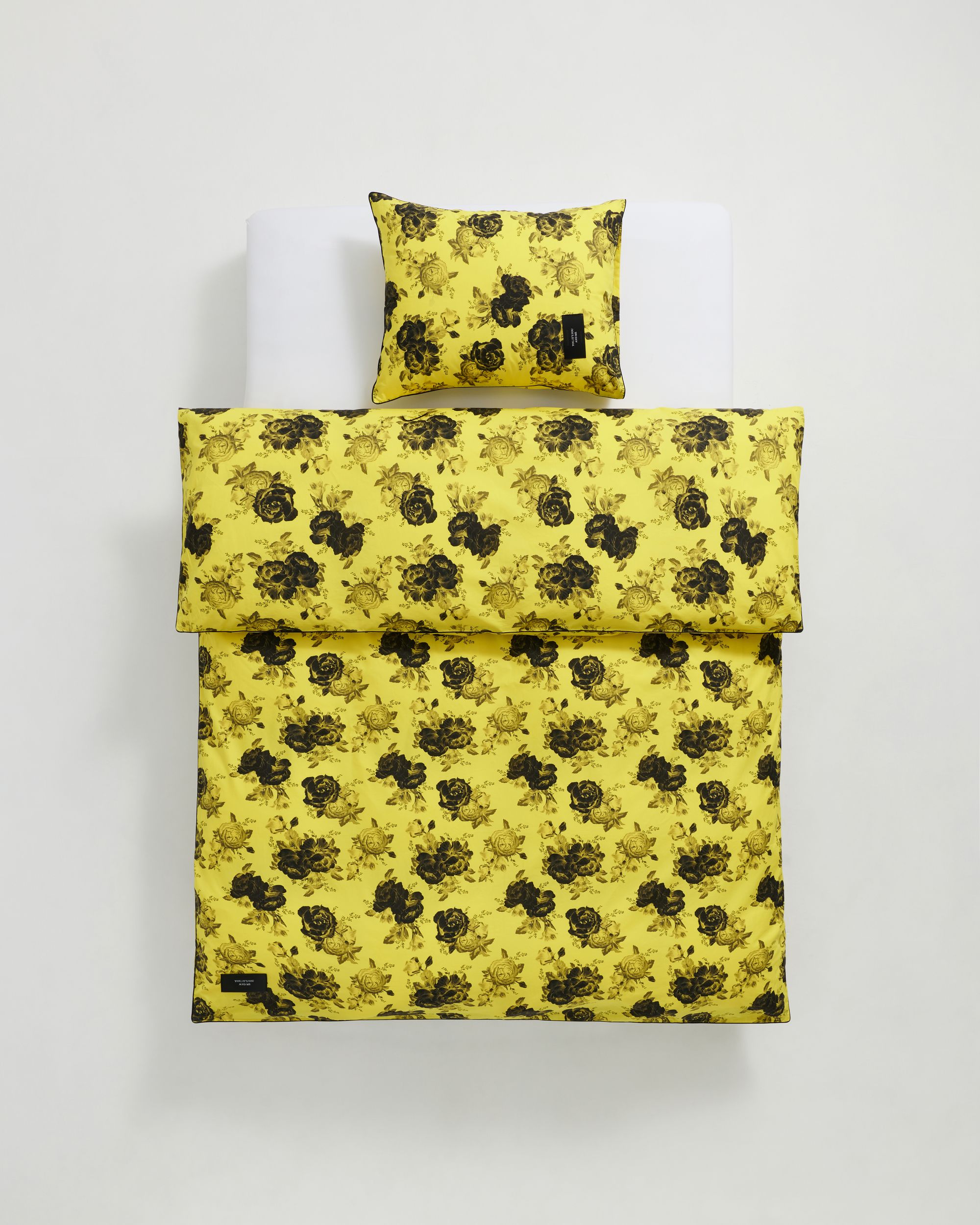
Jonathan Saunders's green Sweet floral collection for Magniberg in Green Rose. Image courtesy Magniberg

Jonathan Saunders's green Sweet floral collection for Magniberg in Green Rose. Image courtesy Magniberg
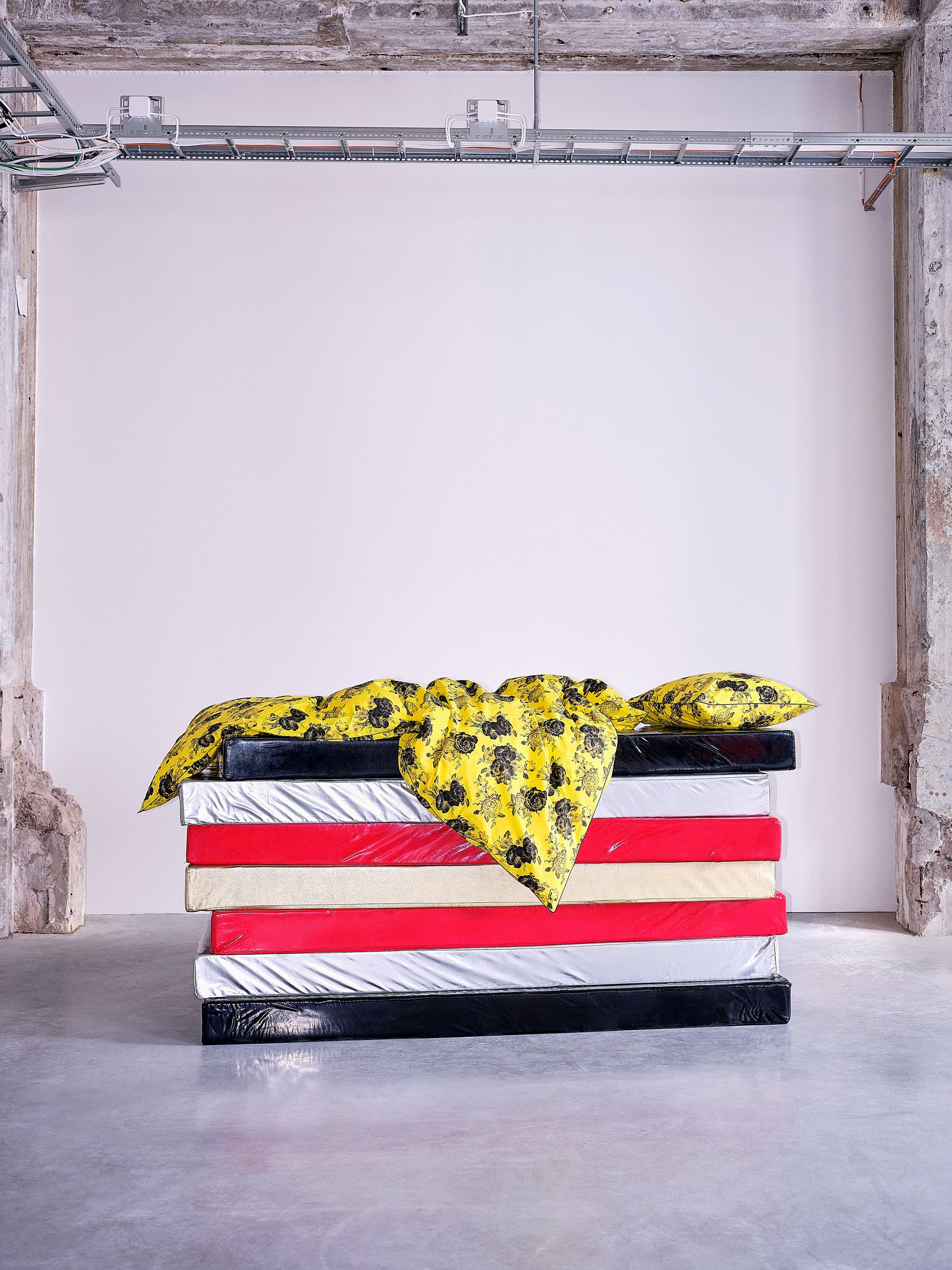
Jonathan Saunders's yellow Sweet floral collection for Magniberg in Yellow Peony. Image courtesy Magniberg
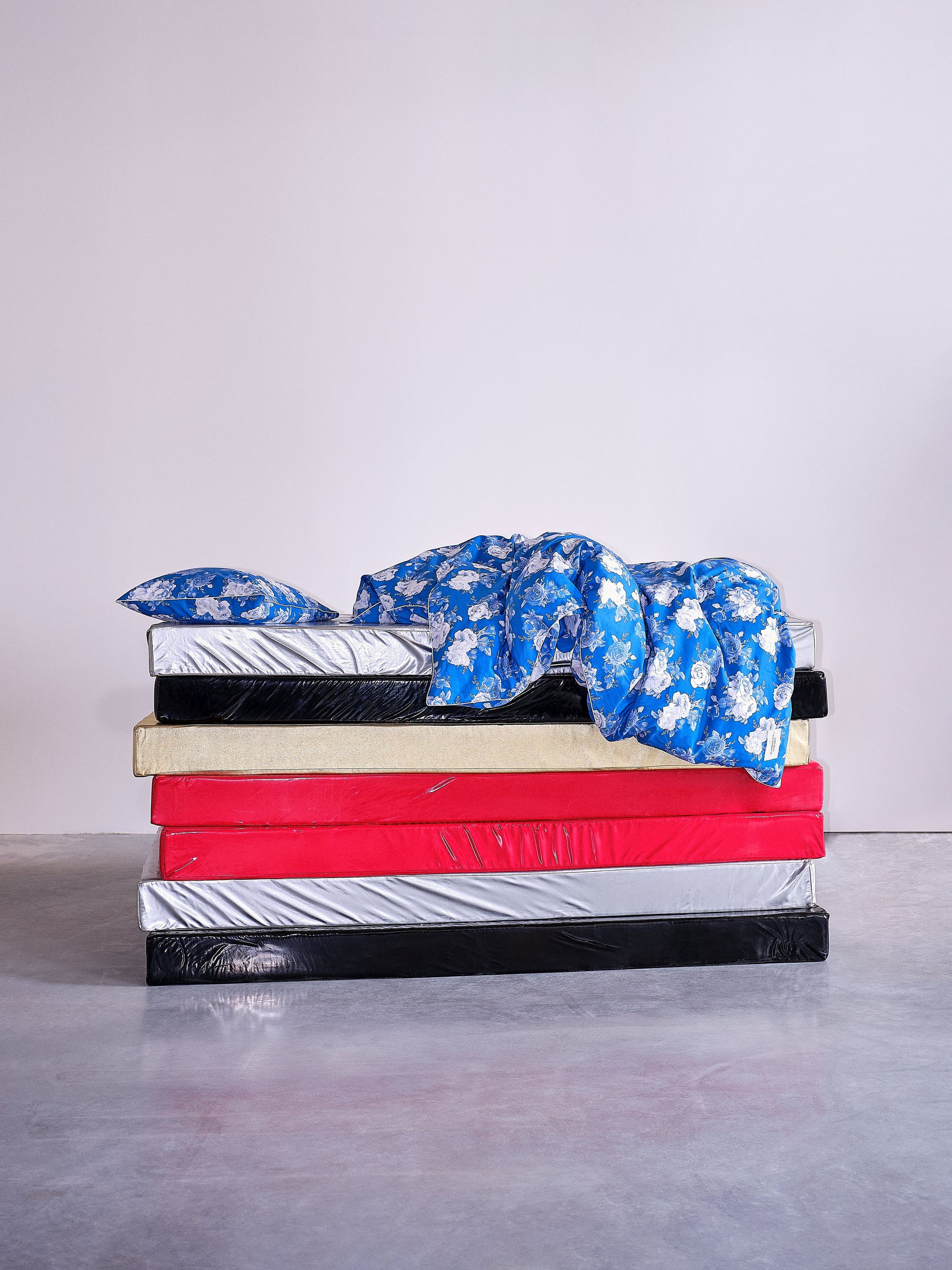
Jonathan Saunders's Sweet floral collection for Magniberg in Blue Peony. Image courtesy Magniberg
Twenty-first-century fashion has seen its fair share of florals. From John Galliano’s Dior and Nicolas Ghesquière’s Balenciaga in the 00s, to the more recent Céline by Phoebe Philo, Jonathan Saunders, Alessandro Michele for Gucci, Simone Rocha, Yuhan Wang, and of course Demna Gvasalia at, again, Balenciaga, every couple of seasons flower-patterned motifs are sent down the runway, greeted as novel by an amnesiac industry press. While fashion can change with perennial ease, furniture is a bit harder to casually edit — most people aren’t going to reupholster their sofa for spring. And, unlike fashion, which trades in ironic winks, home design works with less modish associations. In most Anglo-Saxon cultures at least, floral patterns evoke the chintzy sitting rooms, rose-pocked sofas, and daisy-printed wallpaper of certain middle-class homes. The association is so strong that, when a very pregnant Kim Kardashian arrived at the 2013 Met Gala wearing a Riccardo Tisci peony-patterned Givenchy dress, she was immediately memed into a couch.
The floral motif originally made its way into the Western sensibility through European trade with Asia. As the British, Dutch, and French increased their colonial hold on South and Southast Asia in the 18th and 19th centuries, chintz became fashionable, as did East Asian floral silks. In the second half of the 19th century, as designers like William Morris vaunted Tudor-rose and sunflower patterns, and Victorians celebrated their naturalistic English gardens, the Industrial Revolution made the fabrication of floral patterns more economical and accessible. Moreover, the English country estates they became associated with served as inspiration for the floral trend in the U.S., which has persisted in one form or another ever since. Recently, floral releases have been announced by several European design brands, including B&B Italia (with its reedition of the Bambole sofa) and, most recently, Swedish bed-wear label Magniberg, with a special collection by Jonathan Saunders. Are designers and design consumers ready to recommit to florals?
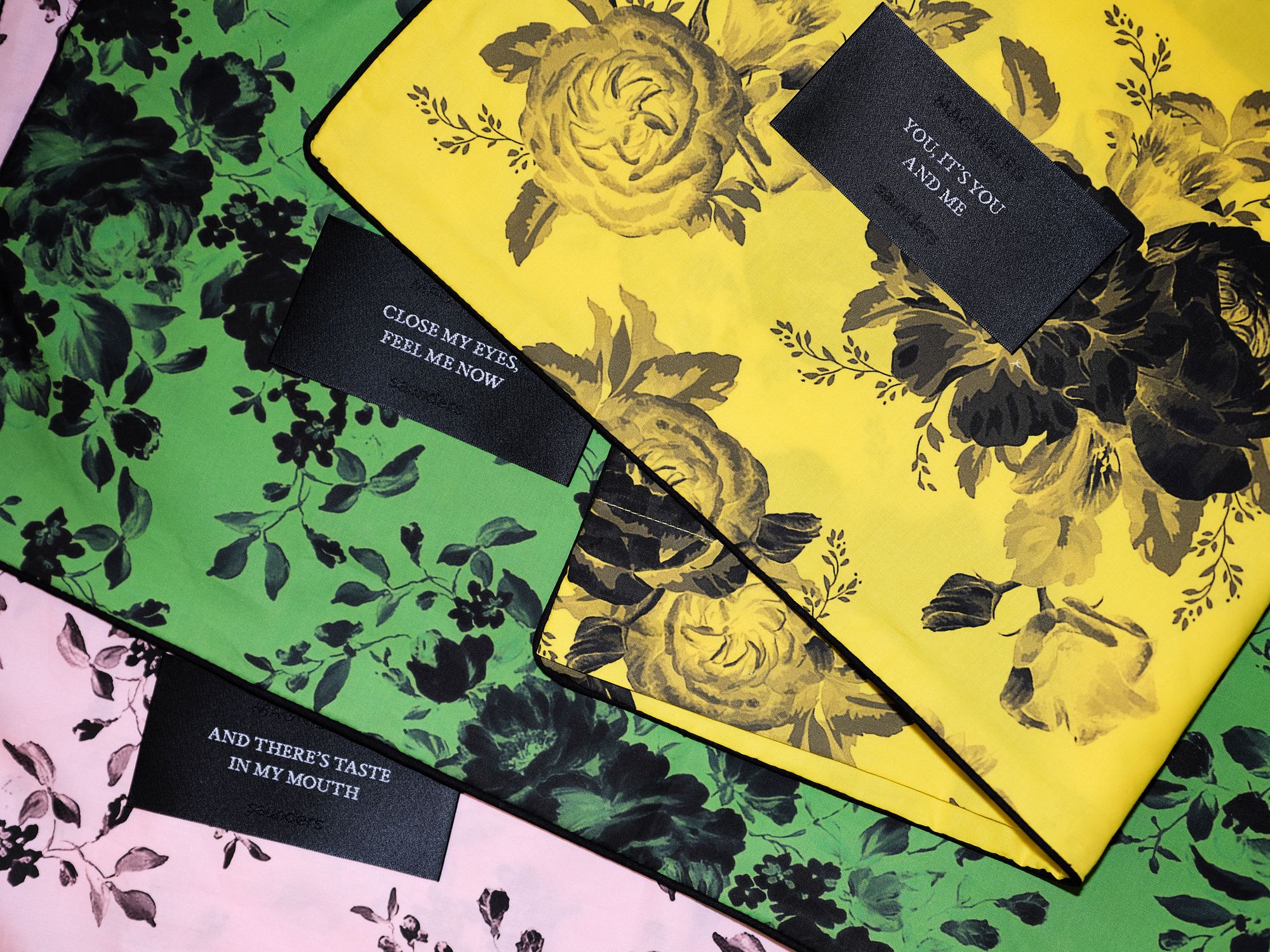
The Jonathan Saunders designed sheets are embroidered with tags featuring different song quotes, chosen by the designer. Image courtesy Magniberg.
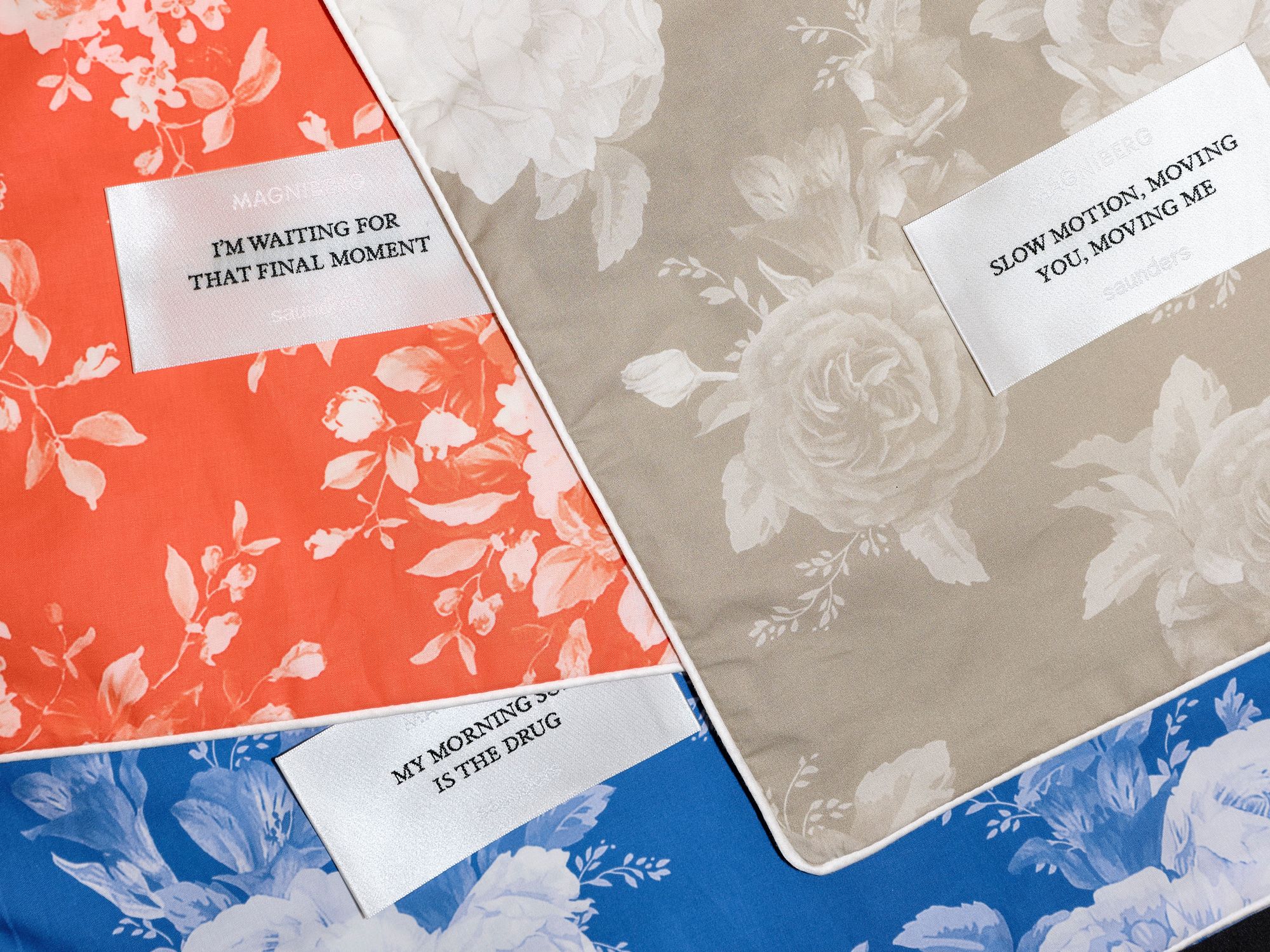
“It’s something traditional, almost grandma, but through an acid-house lens,” says Jonathan Saunders of his collection. Image courtesy Magniberg.
Florals might be rooted in a sense of nostalgia, but in the past few years there’s been a rise of edgier florists like Metaflora and Emily Thompson, whose work is more akin to abstract sculpture than dainty bouquets. Meanwhile, edible flowers have gained popularity among pastry chefs, bartenders, and cooks alike. So what makes florals popular across the style spectrum? “Is there anything more joyful than flowers?” asks interior designer Billy Cotton, who’s best known for his artful and subdued homes for clients like Cindy Sherman, but who also likes to “sneak in” British-style floral chintz. “I love for a space to be enveloped,” he admits, which is why, when asked to design a line of wall-to-wall carpeting for Scott Group, he jumped at the opportunity to create a red petal-patterned option. “The idea of something as fun an entire room or a sofa covered with flowers was something that always attracted me,” he says, acknowledging that, growing up gay and Jewish in New England, florals always seemed associated with old-money WASP culture.
“I usually find flower duvets kind of ugly,” says fashion designer Jonathan Saunders, who has successfully transitioned his business into homeware. The New York-based Scot recently collaborated with the Swedish bedwear brand Magniberg to create a line of floral bedding and pajamas. The six patterns of white or black blooms against highly saturated backgrounds were designed by photocopying Victorian wallpaper until the details fell away and he was left with a more graphic look. “It’s something traditional, almost grandma, but through an acid-house lens,” says Saunders, who lists 90s rave flyers among the inspirations for his “kinky” take on floral decor. The sheets’ embroidered tags feature different song quotes, chosen by Saunders and the Magniberg team after they asked each other, “Which songs do you have sex to?” New Order lyrics appear more than once — fittingly so, since the cover of the band’s 1983 album Power, Corruption & Lies featured a reproduction of an 1890 Henri Fantin-Latour painting A Basket of Roses. Peter Saville, who designed the sleeve, put it in not exactly rosy terms: “[the flowers] suggested the means by which power, corruption, and lies infiltrate our lives. They’re seductive.”
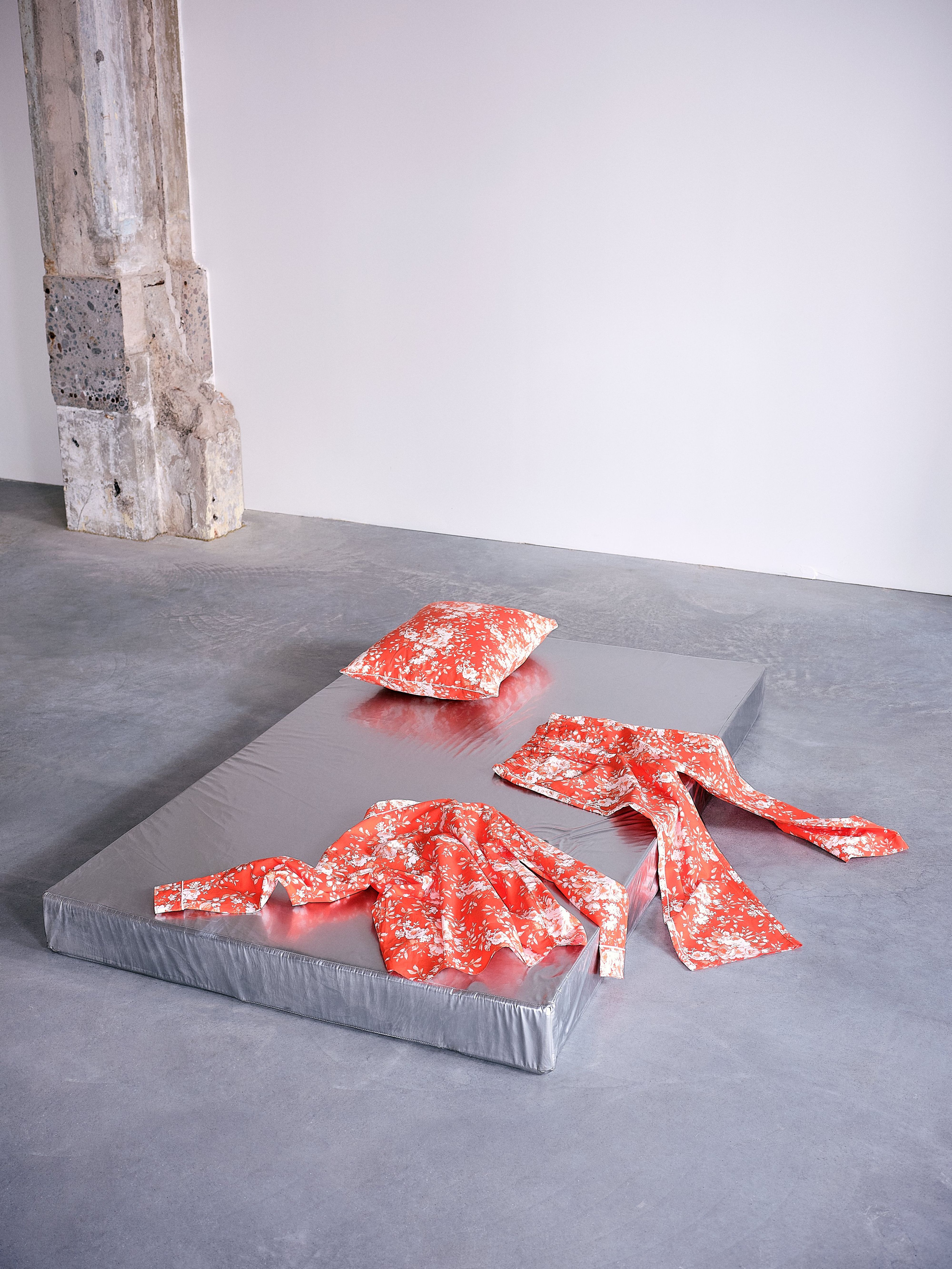
By abstracting old wallpaper patterns, Jonathan Saunders gives an acid house update to florals in his new bedding and pajama collection for Magniberg. Image courtesy Magniberg
The goal isn’t necessarily to make florals appealing to a younger audience, says Bengt Thornefors, Magniberg’s co-founder and a former designer for Acne and Hedi Slimane. “It’s not about age, it’s about a mindset.” Saunders wonders how consumers who would never have thought of bringing floral patterns into their home are going to put them to use, but also how those with traditional tastes might be attracted to his subversive take. He’s very aware that most design consumers prefer a sense of timelessness. “There’s a changeable nature to how we dress and how we express ourselves through clothes, and it hasn’t really happened in the home yet,” he continues. “Our collection allows somebody to be more expressive. If you feel like changing it up and having a floral acid-house moment, then you do.”
Unlike their 19th-century predecessors, which self-consciously signaled their colonial origins, the many varieties of today’s floral homeware tend towards the tonal incoherence that characterizes the globalized era of fashion micro-trends and flash-shipped cut flowers. Whether it’s pretty or flirty, comforting or pricked with thorns, high-resolution or Hi-NRG, on settees or mini-skirts, mortal flowers are transmogrified into mass-produced commodities. “We take a picture or share it on social media. It’s like putting on a new T-shirt — an extension of what we wear is our environment,” comments Saunders. And while we can always fool around on a floral bedspread, the new sheets will get greater exposure in a front-facing camera nude.



